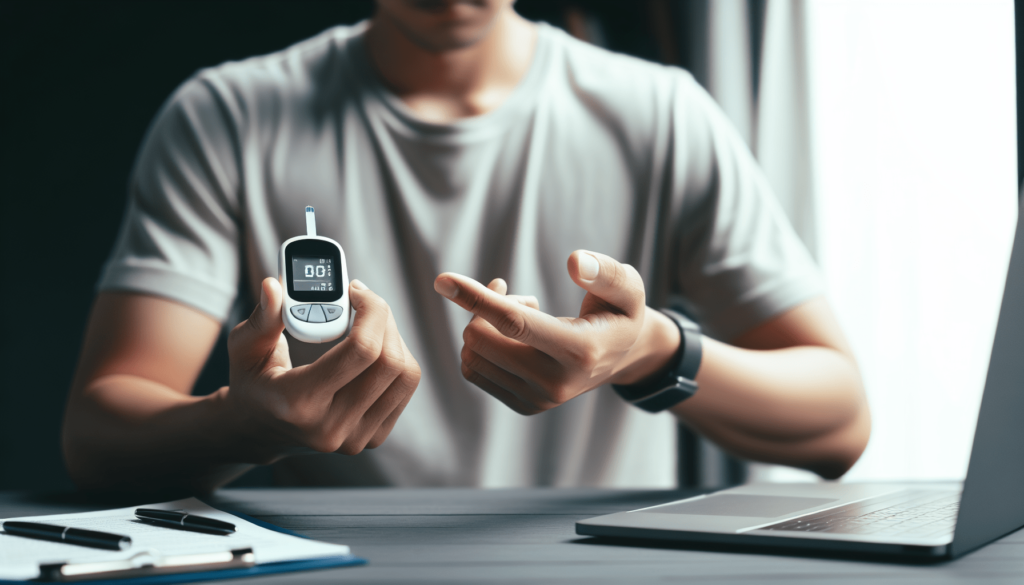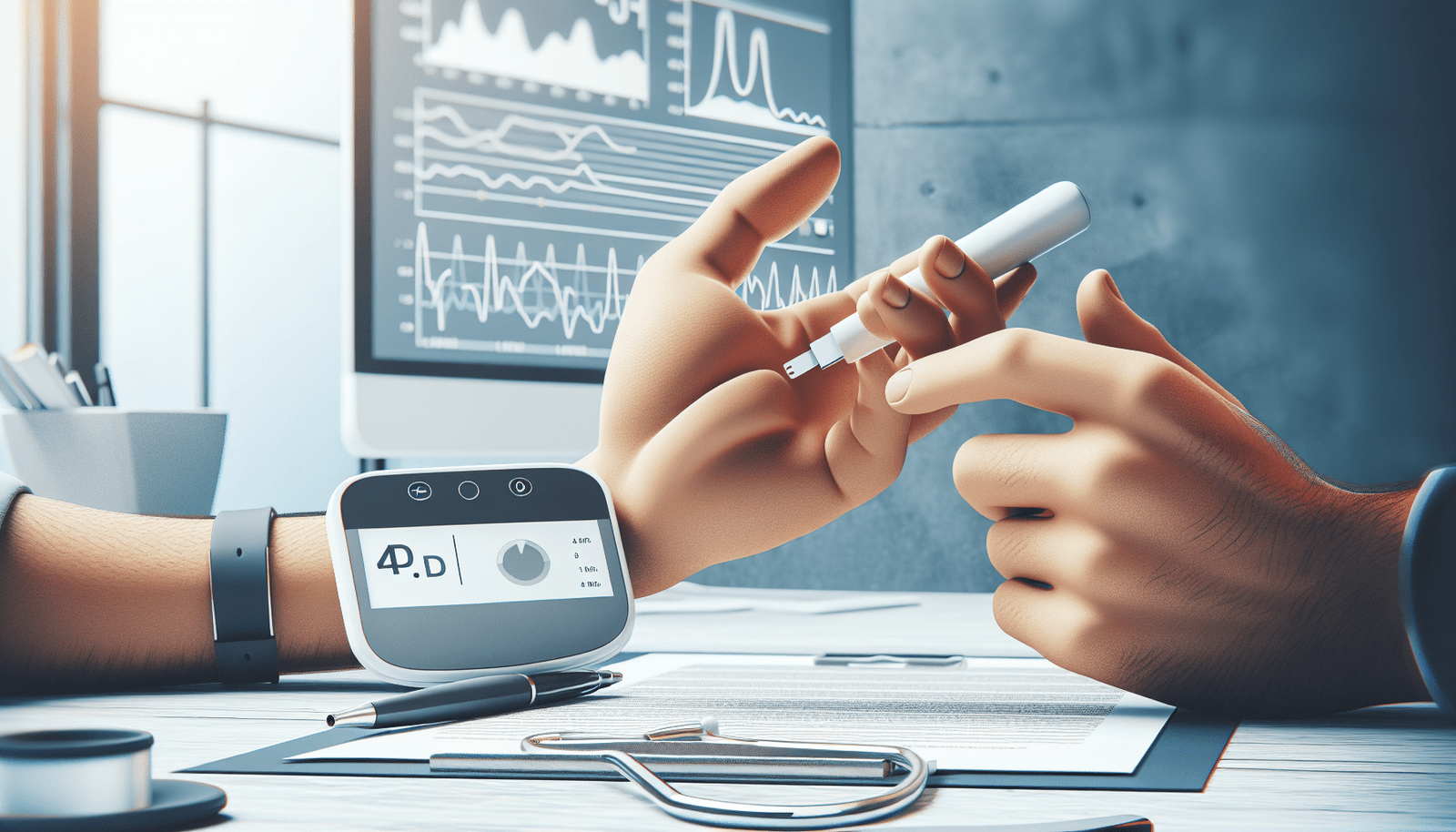Are you looking for tips on managing diabetes and finding the right supplies to help you on your journey to better health? Managing diabetes can be overwhelming, but with the right tools and resources, you can take control of your health and live a fulfilling life. In this article, we will discuss various aspects of diabetes management and provide information on the essential supplies you need to help you manage your condition effectively.
Understanding Diabetes
Diabetes is a chronic condition that affects how your body processes glucose, a form of sugar that serves as a vital source of energy for cells. When you have diabetes, your body either does not produce enough insulin or cannot effectively use the insulin it produces. As a result, glucose builds up in your bloodstream, leading to high blood sugar levels.
Types of Diabetes
There are several types of diabetes, with the most common being Type 1 and Type 2 diabetes.
-
Type 1 Diabetes: In Type 1 diabetes, the body’s immune system attacks and destroys the cells in the pancreas that produce insulin. This results in a lack of insulin production and requires individuals with Type 1 diabetes to take insulin injections or use an insulin pump to manage their blood sugar levels.
-
Type 2 Diabetes: Type 2 diabetes is the most common form of diabetes, characterized by insulin resistance and relative insulin deficiency. It is often associated with lifestyle factors such as poor diet, lack of physical activity, and obesity. Initial treatment for Type 2 diabetes may include lifestyle modifications, such as dietary changes and exercise, as well as oral medications or insulin therapy.
Gestational Diabetes
Gestational diabetes is a form of diabetes that occurs during pregnancy. While it typically resolves after giving birth, women who have had gestational diabetes are at an increased risk of developing Type 2 diabetes later in life. Managing gestational diabetes involves monitoring blood sugar levels, following a healthy diet, and potentially using insulin to control blood sugar levels.
Prediabetes
Prediabetes is a condition in which blood sugar levels are higher than normal but not high enough to be diagnosed as Type 2 diabetes. Individuals with prediabetes are at an increased risk of developing Type 2 diabetes if lifestyle changes are not made. Managing prediabetes involves making healthy lifestyle choices, such as eating a balanced diet, exercising regularly, and maintaining a healthy weight.
Diabetes Management
Managing diabetes involves a multifaceted approach that includes monitoring blood sugar levels, making healthy lifestyle choices, taking medications as prescribed, and staying informed about your condition. Here are some key aspects of diabetes management that you should focus on to keep your blood sugar levels in check and reduce the risk of complications.
Monitoring Blood Sugar Levels
Regular monitoring of blood sugar levels is crucial for managing diabetes effectively. By monitoring your blood sugar levels, you can track how different foods, activities, medications, and stress levels affect your blood sugar levels.
It is essential to work with your healthcare provider to determine how often you should test your blood sugar levels and what your target range should be. Keep a record of your blood sugar readings to identify trends and patterns and make adjustments to your treatment plan as needed.
Healthy Eating
A healthy diet plays a significant role in managing diabetes and controlling blood sugar levels. Focus on a balanced diet that includes a variety of nutrient-rich foods, such as fruits, vegetables, whole grains, lean proteins, and healthy fats.
Limit your intake of refined carbohydrates, sugary foods and beverages, and saturated fats, as they can cause spikes in blood sugar levels. Monitoring portion sizes and spacing out meals evenly throughout the day can help prevent blood sugar fluctuations and keep your energy levels stable.
Regular Physical Activity
Physical activity is essential for managing diabetes and improving overall health. Exercise helps lower blood sugar levels, increase insulin sensitivity, and maintain a healthy weight. Aim for at least 150 minutes of moderate-intensity aerobic activity per week, such as brisk walking, cycling, or swimming, along with strength training exercises at least twice a week.
Consult with your healthcare provider before starting a new exercise routine to ensure it is safe for you based on your health status and any complications associated with diabetes. Keep track of your blood sugar levels before, during, and after exercise to prevent hypoglycemia (low blood sugar) or hyperglycemia (high blood sugar) episodes.
Medication Management
Managing diabetes may involve taking medications to help regulate blood sugar levels. Depending on the type of diabetes you have, your healthcare provider may prescribe oral medications, insulin injections, or other injectable medications to help control your blood sugar levels.
It is essential to take your medications as prescribed and follow your healthcare provider’s instructions for dosing and timing. Keep track of your medication schedule and refill prescriptions on time to ensure you have an adequate supply of medication on hand.
Stress Management
Stress can significantly impact blood sugar levels and make it challenging to manage diabetes effectively. Practice stress management techniques such as deep breathing, meditation, yoga, or engaging in hobbies and activities you enjoy to reduce stress levels and promote relaxation.
Regularly monitoring your stress levels and implementing stress-reducing strategies can help you stay on track with your diabetes management plan and prevent spikes in blood sugar levels due to stress.

Essential Supplies for Diabetes Management
Having the right supplies on hand is essential for managing diabetes effectively and staying prepared for any situation that may arise. From blood glucose meters to insulin pens, here are some essential supplies that can help you monitor your blood sugar levels, take medications, and stay organized in your diabetes management routine.
Blood Glucose Meter
A blood glucose meter is a handheld device that measures the amount of glucose in a small drop of blood obtained by pricking your finger with a lancet. Blood glucose meters are essential for monitoring blood sugar levels at home and making informed decisions about diet, exercise, medication, and other factors that can affect your blood sugar levels.
When selecting a blood glucose meter, consider factors such as ease of use, accuracy, size of the display screen, memory storage capacity, and compatibility with other devices such as smartphone apps or computer software for tracking blood sugar readings over time.
Test Strips
Test strips are disposable strips that are used with a blood glucose meter to measure blood sugar levels. Test strips contain chemicals that react with glucose in the blood sample and produce a measurable signal that is displayed on the blood glucose meter.
It is essential to use the correct test strips that are compatible with your blood glucose meter to ensure accurate and reliable readings. Always check the expiration date on test strip containers and store them according to the manufacturer’s instructions to maintain their effectiveness.
Lancets
Lancets are small, sharp needles that are used to prick the skin and obtain a small drop of blood for testing with a blood glucose meter. Lancets come in various sizes and gauge numbers, with higher gauge numbers indicating thinner needles that cause less pain when pricking the skin.
Regularly change the lancet on your lancing device to prevent infection and ensure optimal blood flow for blood sugar testing. Dispose of used lancets properly in a puncture-proof container to prevent accidental needlestick injuries.
Continuous Glucose Monitor (CGM)
A continuous glucose monitor (CGM) is a device that measures glucose levels in the interstitial fluid (fluid between cells) throughout the day and night. CGMs provide real-time data on blood sugar trends, patterns, and fluctuations, allowing you to make informed decisions about meals, activities, and medications that can affect your blood sugar levels.
Some CGM systems also provide alerts for low and high blood sugar levels, customizable alarms, and integration with insulin pumps for automated insulin delivery based on blood sugar readings. Talk to your healthcare provider about whether a CGM system is suitable for your diabetes management plan and how to use it effectively.
Insulin Pump
An insulin pump is a small, wearable device that delivers a continuous flow of insulin into the body throughout the day and can be programmed to release additional insulin at mealtimes or in response to high blood sugar levels. Insulin pumps offer greater flexibility in insulin dosing and provide accurate delivery of insulin without the need for multiple daily injections.
When using an insulin pump, it is essential to monitor blood sugar levels regularly, adjust insulin doses based on food intake and physical activity, and change infusion sets and reservoirs as needed to ensure proper insulin delivery. Work with your healthcare provider to determine the best insulin pump system for your diabetes management needs.
Insulin Pens
Insulin pens are pen-shaped devices that contain pre-filled insulin cartridges or insulin that can be refilled as needed. Insulin pens are convenient for insulin administration on the go and offer discreet and accurate dosing of insulin for individuals with diabetes who require insulin injections.
When using an insulin pen, follow the manufacturer’s instructions for loading and dispensing insulin doses, storing the pen at the appropriate temperature, and properly disposing of used needles and cartridges. Keep extra insulin pens on hand to ensure you have an adequate supply of insulin when away from home.
Sharps Container
A sharps container is a puncture-proof container designed to safely dispose of needles, lancets, and other sharp objects used in diabetes management. Sharps containers are essential for preventing accidental needlestick injuries, reducing the risk of infection, and complying with safe disposal guidelines.
Dispose of used lancets, needles, and other sharp objects in a sharps container immediately after use and seal the container securely to prevent spills or leaks. When the sharps container is full, seal it according to local regulations for medical waste disposal and dispose of it at a designated collection site or drop-off location.
Conclusion
Managing diabetes requires a proactive approach to monitoring blood sugar levels, making healthy lifestyle choices, taking medications as prescribed, and staying informed about your condition. By incorporating essential supplies into your diabetes management routine and working closely with your healthcare provider, you can effectively manage your diabetes and improve your overall health and quality of life.
Remember to stay organized with your supplies, follow a regular monitoring schedule, and make adjustments to your treatment plan as needed to keep your blood sugar levels in check. With the right tools, resources, and support, you can take control of your diabetes and lead a fulfilling life.



